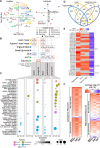This is a preprint.
Caloric restriction reprograms adipose tissues in rhesus monkeys
- PMID: 40093109
- PMCID: PMC11908232
- DOI: 10.1101/2025.03.03.641286
Caloric restriction reprograms adipose tissues in rhesus monkeys
Update in
-
Caloric Restriction Reprograms Adipose Tissues in Rhesus Monkeys.Aging Cell. 2025 Oct 3:e70254. doi: 10.1111/acel.70254. Online ahead of print. Aging Cell. 2025. PMID: 41042069
Abstract
Caloric restriction (CR) is a dietary intervention that delays the onset of age-related diseases and enhances survival in diverse organisms, and although changes in adipose tissues have been implicated in the beneficial effects of CR the molecular details are unknown. Here we show shared and depot-specific adaptations to life-long CR in subcutaneous and visceral adipose depots taken from advanced age male rhesus monkeys. Differential gene expression and pathway analysis identified key differences between the depots in metabolic, immune, and inflammatory pathways. In response to CR, RNA processing and proteostasis-related pathways were enriched in both depots but changes in metabolic, growth, and inflammatory pathways were depot-specific. Commonalities and differences that distinguish adipose depots are shared among monkeys and humans and the response to CR is highly conserved. These data reveal depot-specificity in adipose tissue adaptation that likely reflects differences in function and contribution to age-related disease vulnerability.
Keywords: adipose; caloric restriction; rhesus monkeys; subcutaneous; visceral.
Conflict of interest statement
Conflict of Interest The authors declare no conflict of interest.
Figures





References
Publication types
Grants and funding
LinkOut - more resources
Full Text Sources
